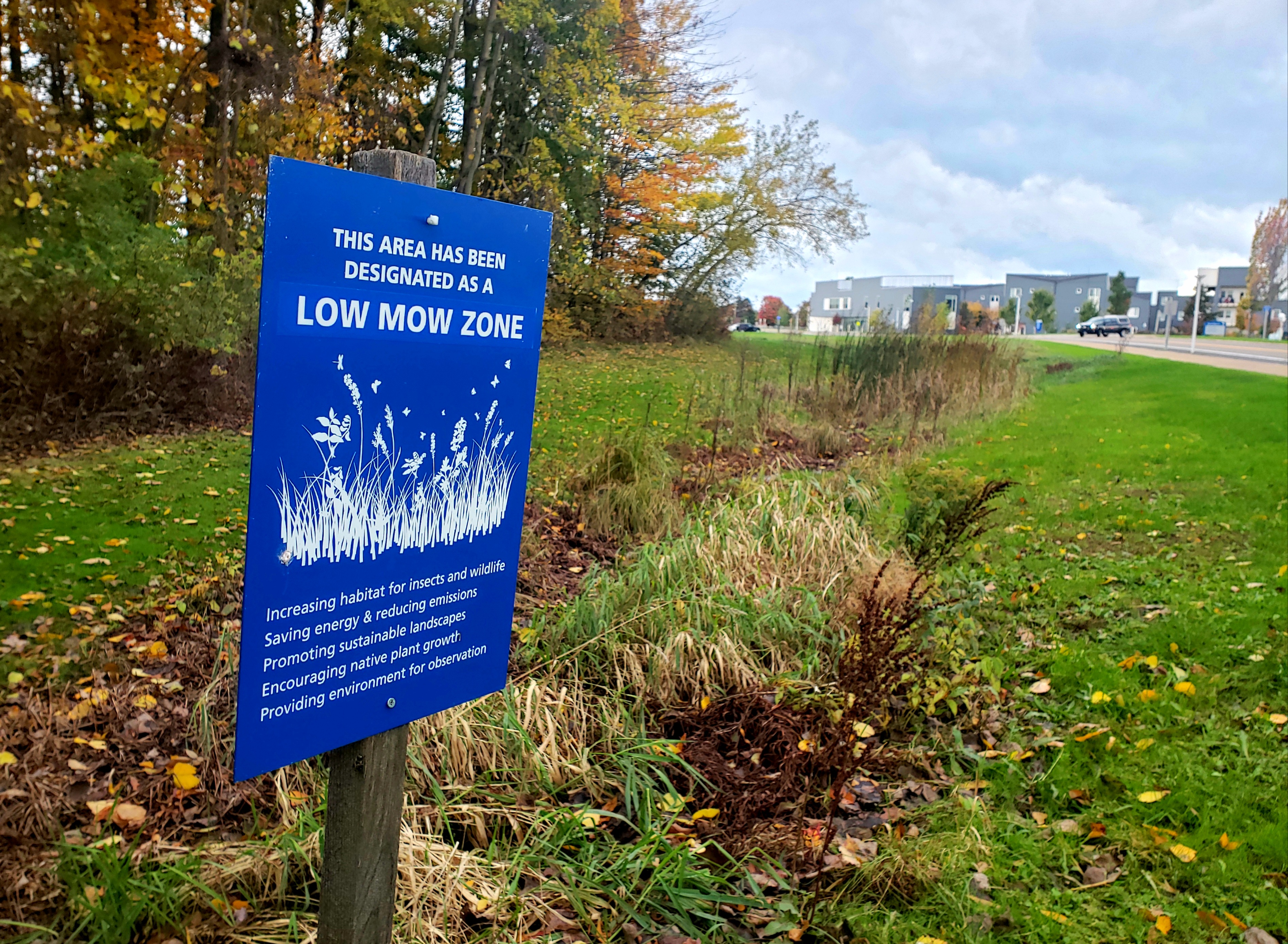
JULES HOEPTING
Managing Editor
Sometimes doing nothing is the best way to help the environment.
A “no mow zone” is a designated section of land purposely not mowed in order to encourage native plant species growth. If left alone for a century or longer, the lawn will transform into a forest.
In 2012, science education professor Dr. Michael Jabot was able to convince SUNY Fredonia’s administration to try out a no mow zone on campus, since the lack of mowing would save costs on labor and fuel. The first no mow zone was established next to the campus woodlot facing University Stadium, which, according to biology professor Dr. Jonathan Titus, was an area “wet and steep and tricky to mow” anyways. The administration appreciated the sustainability appeal and the financial savings the no mow zone created, and implemented more low mow zones in 2017 and 2020, according to Kevin Cloos, director of facilities services.

In 2018, all no mow zones were re-named “low mow zones.” As opposed to “no mow” zones which are never mowed, “low mow” zones are mowed based on land management plans: once a year, once every three years, once every five years, etc. Low mow zones are mowed just enough so that woody plants cannot turn into trees and the zones do not become forests.
According to Cloos, a few of the low mow zones previously added have been removed “due to the appearance and pests creating lawn damage.” Although low mow zones can have problems with pests and invasive species, Titus said “almost all the time, invasive species are not going to be an issue with no mow zones. It’s just something that happens sometimes, and then you have to manage for that,” adding that usually when people “stop mowing, nice plants will come along.”
Low mow zones are ideal habitats for insects and small animals and become rich with species. Titus takes his Intro to Ecology and Evolution class out to the zones for educational purposes.
In addition to low mow zones, there are several native species gardens around campus. Some of these locations include near the clock tower between the Michael C. Rockefeller building and the campus woodlot, and in front of Jewett Hall. Native species are species believed to be present in New York before the arrival of Europeans and include New York ironweed, goldenrod, asters and many other plants. Titus said the native species garden outside of Jewett Hall has “60 to 70 species in it” which makes up a “really nice color palette” when in season that is “great for pollinators.”

In general, Titus recommends people plant native plants as opposed to planting popular ornamentals like mums, petunias, pansies, irises, tulips, etc. “Many non-native plants don’t have nectar [and] don’t attract pollinators” and provide “no ecosystem value.” Many non-native plants are “just like having a piece of paper that you painted in terms of what they do for the environment,” said Titus.
Titus further advises the planting of native trees, like sugar maples, as opposed to non-native trees, like Norway maples, which often struggle to thrive in the Fredonia area.
Besides planting native species and not mowing, there are other ways to help out the environment by doing less. Titus advises using less pesticides, clarifying that pesticides are an “extremely valuable, incredible tool,” but that much of pesticide use is “unnecessary.” Particularly the usage of pesticides on lawns is frequently unnecessary.
Titus also advises residents to stop raking leaves in their yard, or to make mulch out of leaves in their yard.
“You can put your leaves in a pile and you mow them and you make a mulch. Then you can use the mulch instead of buying mulch,” said Titus. The concept of raking leaves, putting them in a bag and having that bag go to a landfill strikes Titus as “weird” and a waste of time.
“We could do huge things for the environment, like massive, if we just did less,” said Titus.

